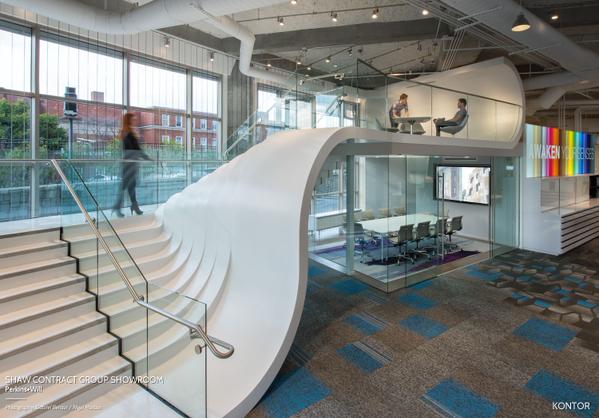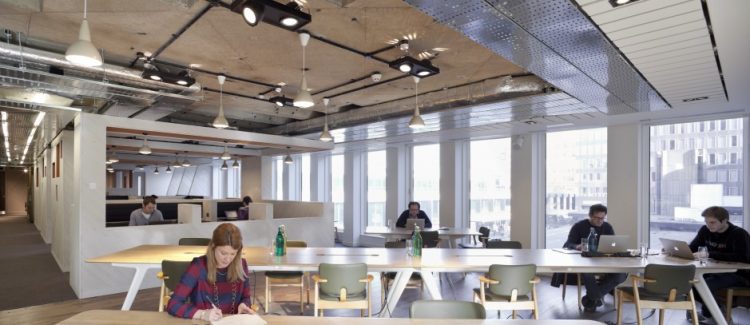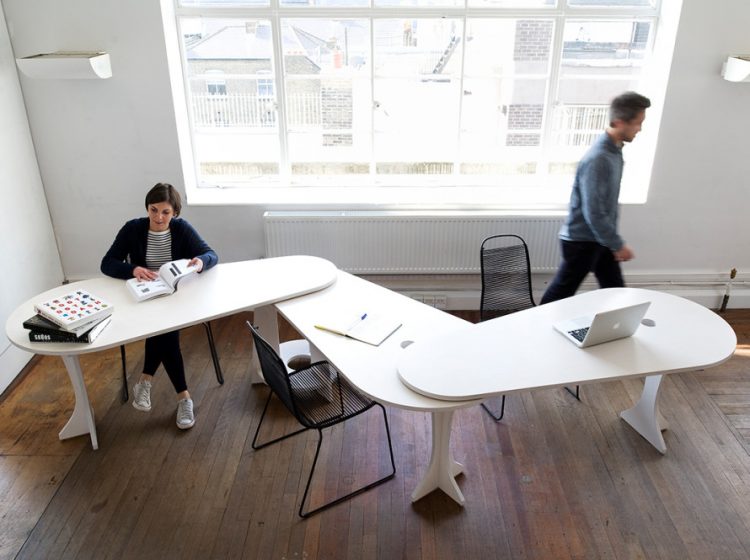Globally renowned expert on the impact of the built environment on business performance, Despina Katsikakis, is a major player in transforming how we understand today’s workplace. Interested in the ways in which physical environments affect both user experience and their impact on business, Despina has worked with developers, funds and their design teams on how to “differentiate and future proof award winning schemes globally”. Recently a speaker at the first Social Workplace Conference in London, we spoke with Despina about the ways in which the contemporary office can create all inclusive work environments and why events like Social Workplace are so important to the future of work.
Hi, Despina. You have a lot of experience helping large enterprises, like Barclays, to reinvent their idea of the workplace. What types of projects are you currently working on?
I worked with Barclays to help them understand the best way to utilize space as a way to change behaviors, support innovation, as well as co-creation. In addition to that project, I am doing a similar project with another bank at the moment.
I am also the design curator for a new 1.5 million ft.2 [139.354,56 m2] tower in the City of London. This is a very exciting project as the objective is to design a vertical village, which will be a real-time social network that will embrace the sociability of how we work today. The aim is to create a different model for what a building can offer, from providing a variety of work areas and amenities, as well as a platform for connection and community with places and events that support collision, collaboration, curiosity, and wellness.
An increasing amount of corporations are attempting to adapt this model, but it’s not as easy as it might seem on paper. Why do you think some corporations fail when they try to implement the social workplace into their company?
I think that there are several reasons for unsuccessful adaptation. Number one, there is always a disconnect in large corporations between workspace and what motivates attracting and retaining talent. More often than not, the space comes from a traditional perspective, and the main objective is always to reduce costs without measuring what impact it might have on people’s engagement and productivity.
The times I have seen a social workplace successfully implemented into a corporate landscape is when the senior leadership recognize the role and value that physical space has in conveying the culture and values of the organization. However, in order to make it happen, it requires bringing together HR, IT and real estate in order to create an integrated people-centric experience.
What needs to happen in order to guide corporations in the right direction in regards to the future of work?
There are several elements. When you are helping people embrace something different, you have to get them to understand what they are currently doing.
80 percent of large corporations will still try to provide efficient office space, which will be adequately designed and laid out, but will still assume that people will come in and work at their desk all day long. The reality is that desk space tends to be utilized on average 40 to 50 percent of the time on a typical day. People today work in a variety of locations, and they are not always sitting at their desk, thus the space remains under utilized and does not support collaboration nor inspire employees. When in these situations, I ask what it is the company is trying to achieve and try to hold up a mirror to reflect back to them the actual messages that their current space communicates.
By creating awareness, companies can understand the disconnect and clarify what their message should me. Addressing changes in the physical environment is always aligned with guiding them through a process of creating the right culture and behaviors to support their business. Space cannot just look different it needs to also feel different through the way people actually work, interact and engage with one another.
How has the development of Social Workplaces changed the way that corporations value and find talent? Have there been some setbacks, i.e. difficulty finding appropriate employees?
I think the issue with talent is always independent from the economic cycles. Whether there is a crisis or not, organizations are always looking for talent, but what has shifted in the last few years is that employees want to have choice and flexibility, as well as authentic sociability and a sense of well-being. For that reason many individuals are now choosing not to work for big corporations because they have the flexibility to fulfill a variety of roles. Thus, it has become much more difficult for employers to access talent, so now they need to embrace a dispersed talent network which is not hierarchical but rather more reliant on skills and open sourced innovation.
Like major corporations, has this transformation affected the real estate sector? Are there ways that they can adapt and make space more readily available? What do they need to do to meet the needs of contemporary lease agreements?
Yes, definitely. Much of the current innovation taking place in the workplace comes from outside, like coworking environments, and the real estate industry recognizes that. Corporate occupiers are now looking to increase their real estate flexibility and access talent in different ways. Also, the same organizations will want flexibility through ‘spaceless expansion’, which is interesting because it means that from a real estate point of view, they will need to move away from traditional fixed leases and space in order to embrace flexible and on-demand space.
The workplace transformation is obviously benefitting businesses and employees who are already somewhat established, but what about those who do not have access to these types of resources? Do you think that Social Workplaces could create an equal playing field for various demographics?
I do. This makes me think back to Edu Forte’s presentation at the Social Workplace Conference about shared workspace. The idea that we are working towards creating places where you can bring together various individuals and generations to work side by side and create community creates more room for mobility and is very exciting.
It is always talked about that Millennials want flexibility, but so do Baby Boomers. We need to re-tap into these types of work experiences that inspire and attracts those from all demographics and age groups.
What was your impression of the first Social Workplace Conference? How do you see the conversation continuing? And what would be the necessary steps to ensuring we build a workplace environment that actually meets these needs?
The first conference was really good. Events like Social workplace are hugely important in terms of educating corporate occupiers, investors and users of space, of what the opportunities are. Also, the ability to hear these experiences first hand is very rich.
I think that we are at an amazing time of innovation and change in terms of rethinking how we live and work today. We have more opportunity to collaborate and co-create new environments, and the conference plays an important role in pushing these changes in the workplace today.
Amanda Gray















Recent Comments